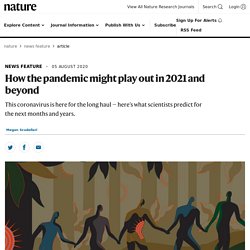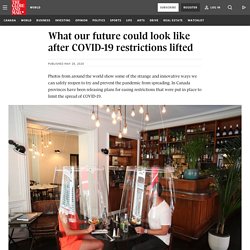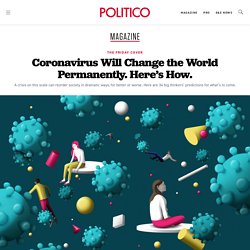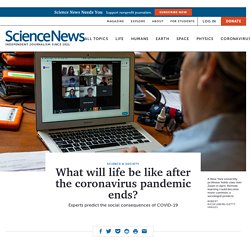

What does the future of work look like after COVID-19? Predicting the future of work is always tricky, and the COVID-19 pandemic has made any type of prognosis even more difficult.

While it’s anyone’s guess what’s next, some constants remain: organisational performance will always be important, and it is dependent on employees. Deloitte’s 2020 Human Capital Trends report provides a wealth of information on the future of work, especially in light of COVID-19. We chose two specific areas of the report and asked Deloitte’s Global Human Capital Leader, Erica Volini, to provide insight on them. Belonging: Moving from comfort to connection to contribution Deloitte’s report found that 93% of respondents believe that a sense of belonging (feeling respected and being treated fairly) drives organisational performance. It’s important for employees to have meaningful work, and it’s also important that they feel a sense of connection to the people they work with.
Designing work for well-being: Helping employees live and perform at their best. How the pandemic might play out in 2021 and beyond. June 2021.

The world has been in pandemic mode for a year and a half. The virus continues to spread at a slow burn; intermittent lockdowns are the new normal. An approved vaccine offers six months of protection, but international deal-making has slowed its distribution. An estimated 250 million people have been infected worldwide, and 1.75 million are dead. Scenarios such as this one imagine how the COVID-19 pandemic might play out1. “The future will very much depend on how much social mixing resumes, and what kind of prevention we do,” says Joseph Wu, a disease modeller at the University of Hong Kong. Last week, the number of confirmed COVID-19 infections passed 15 million globally, with around 650,000 deaths.
If immunity to the virus lasts less than a year, for example, similar to other human coronaviruses in circulation, there could be annual surges in COVID-19 infections through to 2025 and beyond. What happens in the near future? The latter group has modellers very worried. What our future could look like after COVID-19 restrictions lifted. Photos from around the world show some of the strange and innovative ways we can safely reopen to try and prevent the pandemic from spreading.

In Canada provinces have been releasing plans for easing restrictions that were put in place to limit the spread of COVID-19. Open this photo in gallery: Story continues below advertisement. Coronavirus Will Change the World Permanently. Here’s How. Revived trust in institutions.Michiko Kakutani is author of the 2018 bestseller The Death of Truth and former chief book critic of the New York Times.

The coronavirus pandemic, one hopes, will jolt Americans into a realization that the institutions and values Donald Trump has spent his presidency assailing are essential to the functioning of a democracy—and to its ability to grapple effectively with a national crisis. A recognition that government institutions—including those entrusted with protecting our health, preserving our liberties and overseeing our national security—need to be staffed with experts (not political loyalists), that decisions need to be made through a reasoned policy process and predicated on evidence-based science and historical and geopolitical knowledge (not on Trump-ian “alternative facts,” political expediency or what Thomas Pynchon called, in Gravity’s Rainbow, “a chaos of peeves, whims, hallucinations and all-round assholery”).
Fast forward to 2020. How Covid-19 could redesign our world - BBC Future. Coronavirus and the Future of Telemedicine. What will life be like after the coronavirus pandemic ends? As 2020 blessedly clangs to a close, it’s tempting to wonder where we’re headed once the pandemic is history.

In the spirit of year-end curiosity about COVID-19’s possible long-term effects, Science News posed this question to a few scholars: What major social changes do you see coming after the pandemic? As baseball’s Yogi Berra once said, “It’s tough to make predictions, especially about the future.” The following forecasts, edited for length and clarity, aren’t written in stone and aren’t meant to be. But they raise some provocative possibilities.
John Barry Historian, Tulane UniversityAuthor, The Great Influenza: The Story of the Deadliest Pandemic in History What happens in the next six months will have a disproportionate impact on what happens in the more distant future. If the virus remains a threat, changes could be pretty profound, all stemming from a de-densifying, if there is such a word, of life in general. Katherine Hirschfeld Anna Mueller Mario Luis Small.